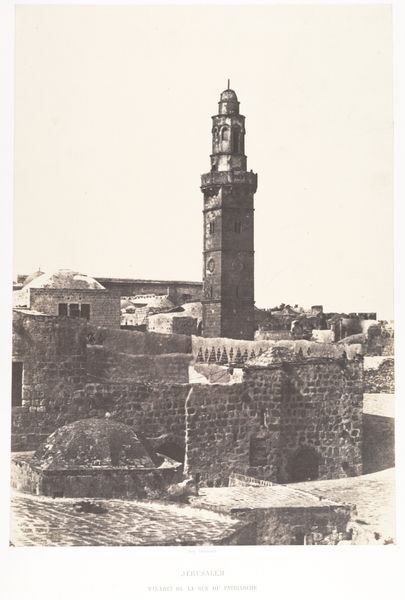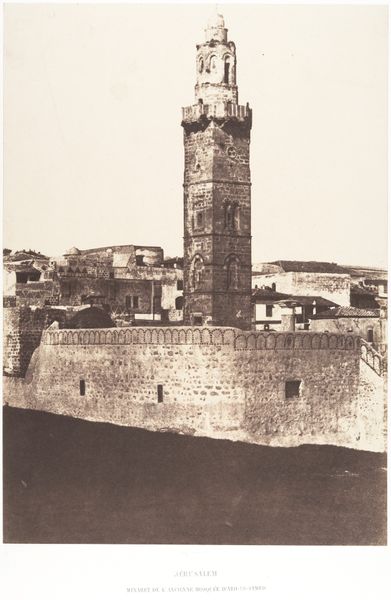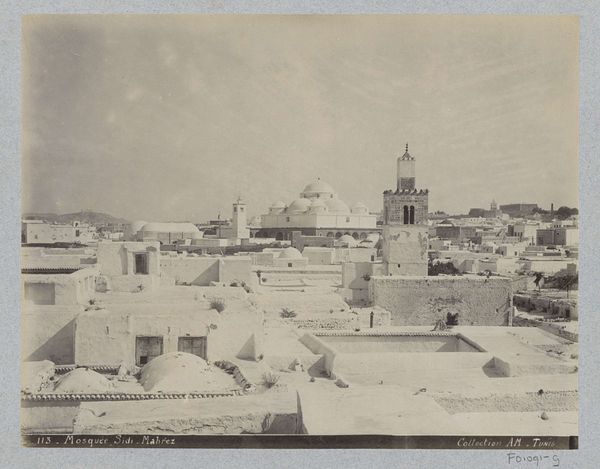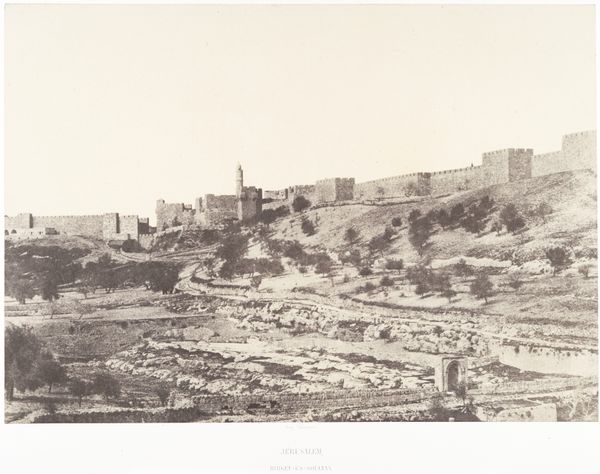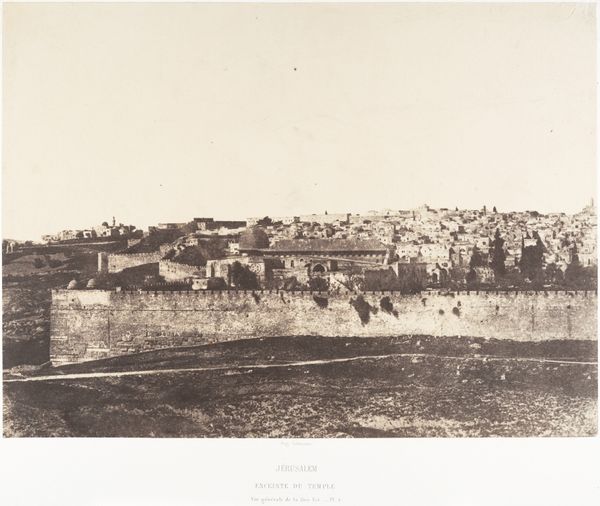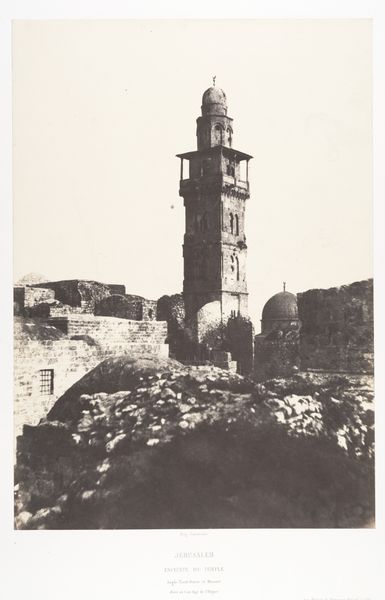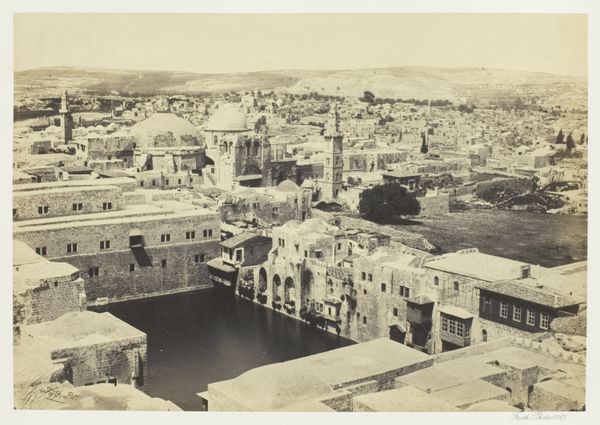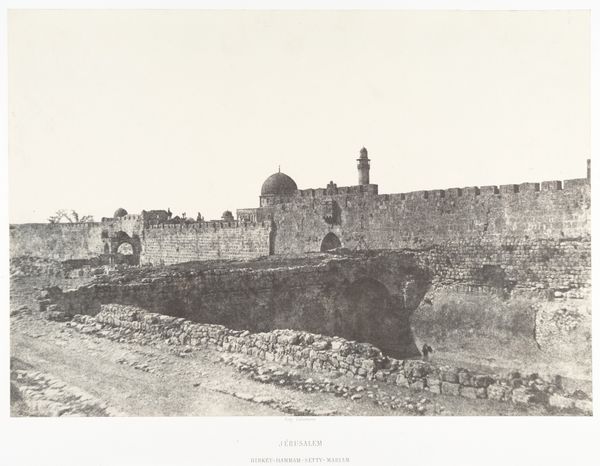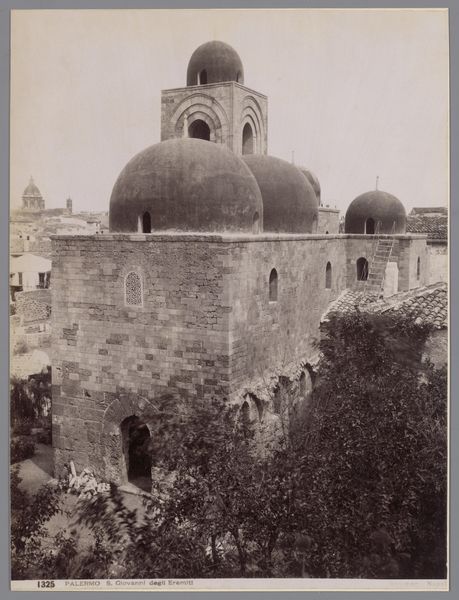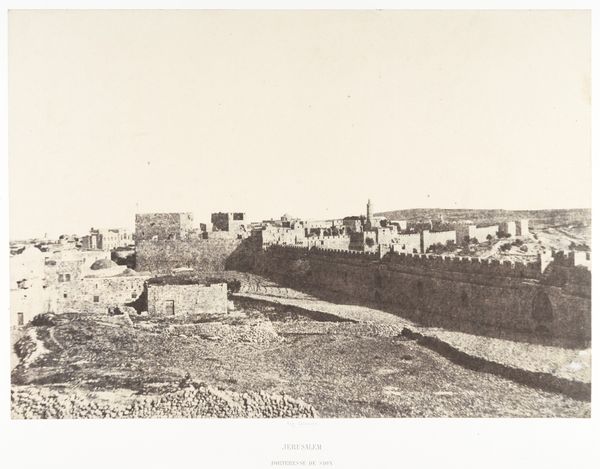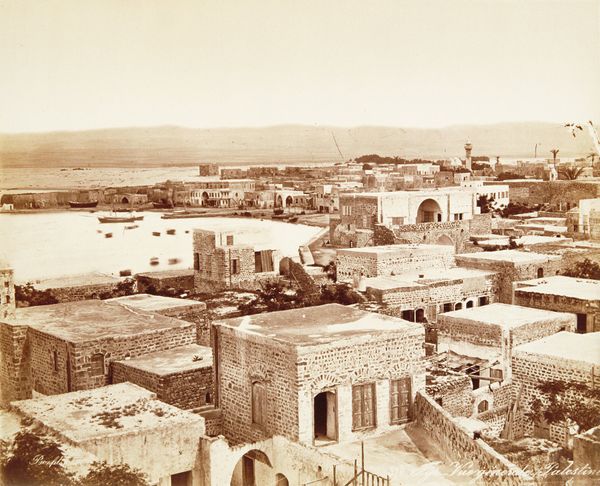
photography, gelatin-silver-print, albumen-print, architecture
#
photo restoration
#
landscape
#
photography
#
ancient-mediterranean
#
arch
#
orientalism
#
gelatin-silver-print
#
cityscape
#
islamic-art
#
albumen-print
#
architecture
Dimensions: Image: 23.4 x 32.7 cm (9 3/16 x 12 7/8 in.) Mount: 44.9 x 61 cm (17 11/16 x 24 in.)
Copyright: Public Domain
Editor: Here we have Auguste Salzmann’s photograph, "Jérusalem, Sainte-Marie-la-Latine," created between 1854 and 1859, using an albumen silver print. There's something almost ghostly about this early photograph of Jerusalem, with the muted tones and strong architectural presence. What draws your eye in terms of composition and form? Curator: Indeed, the photograph possesses a spectral quality, emanating from its meticulous engagement with architectural form. Notice how Salzmann has structured the composition, almost layering the city. The lower portion, a jumble of seemingly ruined structures, rises to meet more organized and monumental forms: the stark geometry of the buildings and the vertical thrust of the tower. Observe the tonal range—the interplay of light and shadow delineates the architectural mass and imbues it with depth. Editor: The contrast is striking. The organized rising out of chaos, almost. But is there any evidence of that organization, or is it a formal feature? Curator: Precisely. Ask yourself what Salzmann seems most intent on representing. The buildings serve as a vehicle to present the interplay between light and form. There’s a near-obsessive focus on texture, evident in the rough-hewn stone and crumbling facades. Light rakes across the surfaces, defining their three-dimensionality, revealing an almost tactile quality to the photograph. The surface texture and the structural forms come together to form meaning, regardless of cultural content. Editor: That makes me look at the textures so differently. Almost like each little bump in the stone tells part of the story of light itself. I suppose context is what you bring to it! Curator: Quite so. Shifting one's perspective can drastically alter perception. The formal aspects guide our experience of the image and that guides our own sensemaking of the content and cultural meaning. Editor: I see that more clearly now. Thanks for pointing that out.
Comments
No comments
Be the first to comment and join the conversation on the ultimate creative platform.
